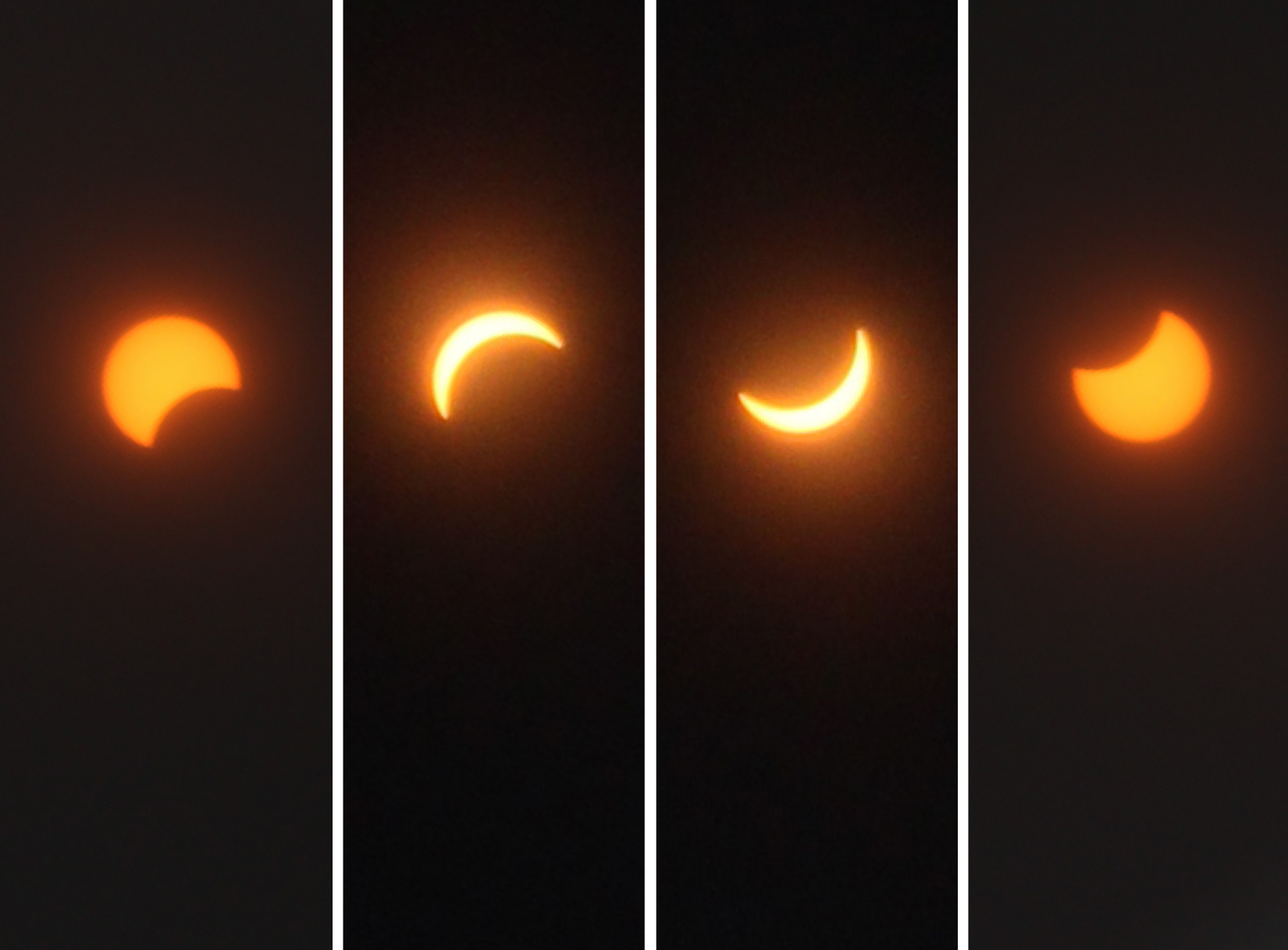The relatively rare treat of a solar eclipse passed through New York State on Tuesday afternoon, giving Suffolk County about 90% of the totality of the event.
A solar eclipse occurs when the moon passes between the sun and Earth. Depending on the alignment of the three celestial bodies, certain parts of Earth experience total darkness for the few minutes the moon passes entirely in front of the sun. The regions within the path for total darkness is called the path of totality. The farther an area is from the path experiences less of the darkness, but will still be able to see the moon move in front of the sun to some degree.
The eclipse was the first to pass over the continental U.S. since August 21, 2017, total visibility of which started in Depoe Bay, Oregon, and ended in Charleston, South Carolina. The April 8, 2024, eclipse essentially mirrored the 2017 eclipse’s path and had total visibility – within the U.S. – from San Antonio, Texas, across the states of Oklahoma, Arkansas, Missouri, Tennessee, Kentucky, Indiana, Ohio, Michigan, Pennsylvania, Upstate New York, and northern New England.
It was the first total solar eclipse visible from Canada since 1979, as the eastern provinces were in the path of totality, and the first over Mexico since 1991. No other solar eclipses will be visible from all three countries until the next century.
The first areas in the world to witness totality were the French Polynesian Islands and the island nation of Kiribati, with partial eclipse visibility as far north as Norway.
But The Messenger made sure to be on site in the de facto center of our three communities of coverage: Raynor Park at Lake Ronkonkoma. Suffolk County Executive Ed Romaine (R-Center Moriches) issued several County parks suitable for good views of the eclipse, including Smith Point, Gardiner Park in Bay Shore, Montauk Park in East Hampton, and West Hills County Park in Huntington.
The partial eclipse was visible as early as 2:30p.m., with near-total visibility peaking at around 3:45p.m. While Suffolk County was not in the path of totality, the proximity was close enough to the moon’s path, allowing 90% of totality for the region.
Once the moon passed over the sun – mostly – temperatures dropped and partial darkness set in. Viewers all around Lake Ronkonkoma had their special eclipse-viewing glasses handy, taking in the rare spectacle on their home turf.
“I’ve never seen an eclipse before,” said Jannine Pergola, LMHC, of St. James. “It’s such a cool experience.
Pergola is a Licensed Mental Health Counselor and practices at SATTVA Wellness and Counseling, located at 47 Route 25A in East Setauket.
“This was my first eclipse as well,” said Marlene Sicoli, of St. James. “It’s amazing how cold it got during the peak.” Sicoli is a real estate salesperson of Coldwell Banker-American Homes in Smithtown.
“I’ve seen other eclipses, but this one really stood out,” said Roselle Marinelli, of Mastic Beach. “Seeing the ‘bites of the apple’ gradually change as it moved across its phases was really cool.”
“This one was much better than the one in 2017, we didn’t get much of that here,” said Andria Beckles of Stony Brook. “Actually watching the moon slowly move across the sun was such a great experience.”
The next total solar eclipse over the U.S. will be March 30, 2033, which will only pass over Alaska. The next total eclipse over some of the Lower 48 will be on August 23, 2044. The next coast-to-coast eclipse will be on August 12, 2045.







